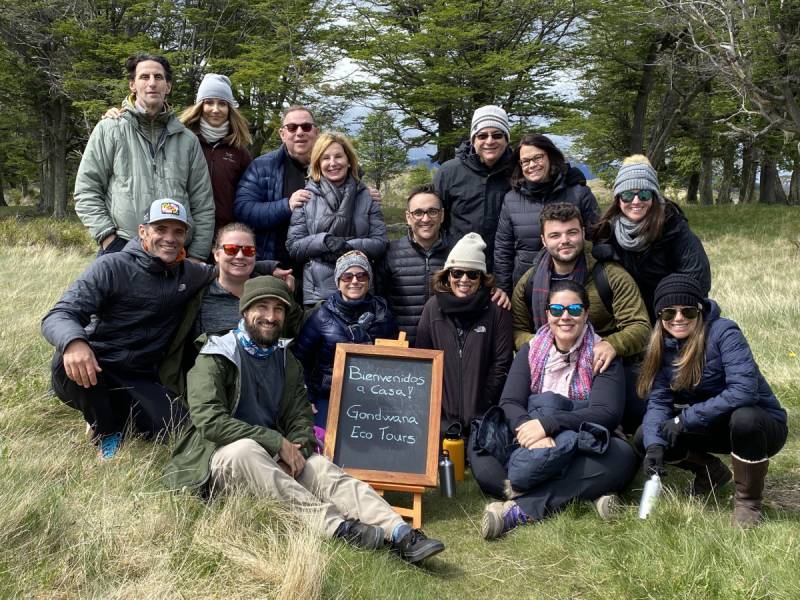Amazing Argentina Plants: A Starter Guide for Phytophiles
Download Travel Details >PRIVATE & SMALL GROUP TOURS TO THE WORLD'S BEST DESTINATIONS
Join Us In Argentina!

Exploring South America Vegetation in Argentina
Argentina is a big country! In fact, it’s so large that its varied climate zones and terrain create the perfect environment for a wide range of plant species. As the eighth-largest country in the world, Argentina’s different vegetation zones include rainforests, grasslands, alpine habitats, and arid deserts. Argentine flora makes up over 10 percent of the world’s varieties, including deciduous and evergreen trees, cacti, vines, and aquatic plants. From the Pampas grass of the Andes foothills to the cacti in the northwest, let’s take a virtual trip to discover Argentina plants!
How Climate Influences Argetine Flora
Argentina is located in South America, and like its neighboring countries, is very hot because it lies within the tropical climate zone. The entire region, including Argentina, experiences an equatorial type of climate and is covered with tropical rainforests. Most of the region experiences very little range in temperature and rainfall; however, Argentina has a wider range of both because of its varied terrain.
For example, the Patagonia region is a desert. This is made possible by a phenomenon known as the “rain-shadow effect of the Andes.” This desert region is home to cacti and other unique Argentina plants. But if you travel to the Pampas region of Argentina, you will notice a difference in the Argentine flora. Here, a Mediterranean type of climate characterized by warm dry summers and cool moist winters allows trees such as oak, walnut, and chestnut to flourish, along with the signature Pampas grasses, a typical example of South America vegetation.
8 Key Vegetation Zones in Argentina
Argentina has a variety of vegetation zones, including rainforests, grasslands, alpine habitats, and arid regions. The country has conifer forests spread throughout its territory, as well as humid cloud forests. Here is a quick breakdown of 8 key regions and the Argentina plants you can find in each:
- The Northwest: This region is a fairly dry and desert-like area. Part of this is due to its altitude, high up in the Andean foothills, and in part due to the aridity of the soil, which is predominantly red sandstone. The Argentine flora that thrives in this climate can endure dry conditions. Many types of cacti are found here, including the famous candelabra cactus known locally as the cardon.
- Misiones Province: This province is part of one of Argentina's most verdant and diverse vegetation zones. The almost constant rainfall means that the climate is humid and dank year round, although winter temperatures can be chilly. In the forests that populate this region, all types of South America vegetation can be found, including indigenous hardwoods and softwoods like giant mahoganies, palms, rosewoods, and jacarandas.
- Esteros Del Ibera: This region includes both swampy lowland and open savannah, where abundant rainfall creates the perfect location for small floating islands that have formed from a tangle of water plants like lilies and reeds.
- The Pampas and Cordoba: This lowland region surrounds the River Plate and is characterized by fairly simple grasslands. The Pampas have been heavily grazed and farmed over the centuries, so much of the indigenous vegetation has been lost. Today, pampas grasses stretch out as far as the eye can see.
- Mendoza: The area that surrounds Mendoza is a mix of desert and poplars. The Argentine flora that exists in this region today has been introduced and cultivated rather than occurring naturally. A good example of this is the grape vines that supply the local wineries and are sustained by a unique system of irrigation.
- Bariloche and the Lake District: In the small valleys and hills of the Lake District, Argentina plants like wildflowers flourish, along with many different types of pine, fir, and cedars.
- Patagonia: The vast, windswept plains of this region are not conducive to South America vegetation; however, visitors can find a few hardy scrub and bush species in the area. On occasion, isolated forests of beech and coniferous woodland will grow, due in large part to the winter storms the make it over the Andes from the Pacific.
- Tierra del Fuego: Although it is the southernmost land mass in the Americas, Tierra del Fuego has an abundance of Argentina plants like the famous Lenga tree. The fruit from this hardy tree are often used to make a local jam. Additionally, many species of evergreens can be found in this chilly region.
Argentina Plants: Does Argentina Have a National Flower?
Yes, Argentina does have a national flower – and it grows on the country’s national tree! The national tree of Argentina is the cockspur coral tree, the blooms of which are also Argentina’s national flower. The cockspur coral tree is locally known as ceibo, and it produces coral-colored flowers in early spring and again in the summer if conditions are right. A mature cockspur tree can grow anywhere between 15 and 20 feet tall, although some can reach up to 35 feet. This unique example of Argentine flora is part of the Fabaceae family, or the pea family!
Plants and the Economy: Growing Native Shrubs for Export
While the ecology of South America vegetation varies greatly, the tropical climate allows many endemic plants to flourish. Two prime examples of common South American shrubs that play an important role in Argentina’s ecology are Yerba Mate and Darwin’s Barberry. These flowering shrubs can be found in many South American countries, but they are also important examples of Argentina plants.
Yerba Mate
Yerba Mate is an evergreen shrub commonly cultivated in Argentina for consumption. It produces white flowers and black, red, or yellow berries. However, it’s the plant’s leaves that are used to make the popular beverage, also called “mate.” Yerba Mate is an important part of Argentine flora, because it has a significant impact on the local economy. The harvesting and processing of this shrub is a complex process, but the cultivation of the plant continues due to its long history within the region.
Darwin’s Bayberry
Darwin's Barberry is an Argentina plant named after Charles Darwin. This thorny evergreen shrub can grow up to 13 feet high and has dense branches with small oval leaves. The flowers of the shrub are orange, and the fruit is a small purple berry that ripens in the summer. This native plant is grown for export, as it is popular as a hedge worldwide.
Argentina Plants in Other Regions of the Country
While the plants mentioned above are good examples of typical South American vegetation that flourishes in Argentina, the country is home to a variety of other Argentine flora. Here are a few more examples of Argentina plants by region:
- Santa Cruz Water Lily: The Santa Cruz water lily is a spectacular aquatic plant native to Argentina. This aquatic perennial produces huge, round, bright green leaves that can reach a width of up to 6.5 feet. The flowers of the Santa Cruz water lily are night-blooming, fragrant, and open for only two consecutive nights. It grows in Northern Argentina, specifically in the Pantanal and Ibera wetlands ecosystems.
- Pampas Grass: Pampas grass is a popular ornamental grass species native to Chile, Brazil, and Argentina. It is known for its large clumps of lush, grass-like foliage and creamy white feathery plumes, though pink varieties also exist. This fast-growing plant can reach heights of up to 10 feet and widths of up to 6 feet. It can even grow is US zones 7 through 11 in full sun and areas with moist, well-drained soil.
- Cardon Cactus: The Cardon cactus is a large cactus species found in the arid regions of the Andes in northwestern Argentina. It can reach impressive heights of up to 63 feet and has a robust, thick trunk and several erect branches. Its flowers are white, bell-shaped, and nocturnal, blooming only for one day in the late afternoon and remaining open until noon the next day. The cactus has a long history of traditional uses as an important food source and within traditional medicine.
- Monkey Puzzle Tree: The Monkey Puzzle Tree is an evergreen coniferous tree native to southwestern Argentina. It typically grows to a height of 100 feet and has a trunk diameter of up to four feet. This tree thrives in cool, humid, and temperate climates and is well-suited to areas with well-drained, slightly acidic, volcanic soil. The Monkey Puzzle Tree has a long lifespan, with some trees living for more than 1,000 years!
Discover Argentina Plants with Gondwana Ecotours
If you’re planning a trip to Argentina, make sure you book with Gondwana Ecotours! Our knowledgeable guides will make your trip an experience of a lifetime. Discover hidden gems that are off the beaten path, get an insider’s view of the local culture, and enjoy discovering unique Argentine flora along the way. Adventure awaits – start planning your trip to Argentina today!

